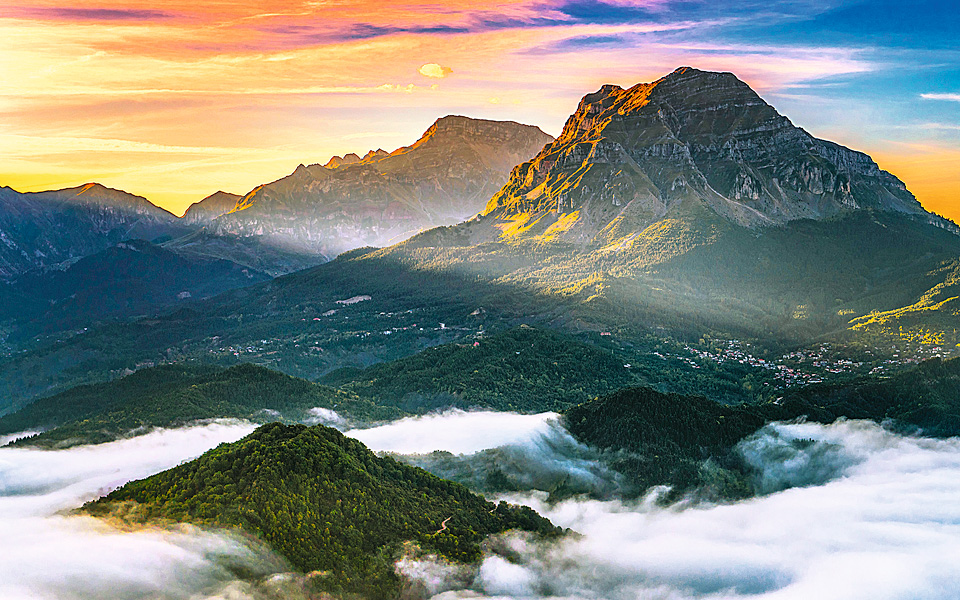In the yard in front of the old three-story school in Syrrako, a cafe now welcomes visitors for a cup of coffee or something stronger. In Vourgareli – the once kefalohori (or ‘head-village’) of Ottoman beys and local herdsmen, the entrance to the headquarters of the legendary resistance figure Napoleon Zervas may be overgrown with weeds, but curtains still hang in the windows. In a cafe in Pramanta, Yiorgos Bekas, a stonemason from a long and distinguished line of craftsmen chews his pipe and blows out a cloud of smoke through the chaos of his beard. In Kypseli the Pantelis Karalis Museum is brimming with relics from a time when the Ottoman empire was not a memory but a reality. On the Aracthos, a river-guide sees me looking down at him and his raft full of oar-wielding adventurers from a bridge and urges me to, ‘Jump, Eleftheria, jump!” There is no way I am jumping, despite the fact that the Aracthos is one of the most alluring rivers that I have ever seen. It has a pale green color, like that of an emerald.
Our journey in Tzoumerka is short but incredibly rich. Tsopela, Pramanta, Mihalitsi, Ktistades, Raftanaioi, Ambelohori, Agnanta, Kataraktis, Melissourgoi, Matsouki, Kalarites, Syrrako, Kypseli, Vourgareli and Theodoriana. These are the villages and settlements that we visit in a short few days. There are many still that we do not have time for as it is impossible to see everything in just one trip. The Tzoumerka (or Athamanika – after the ancient Athamanes) peaks form a mountain range in western Greece at the lower tip of the greater Pindos range. A total of 47 villages – known as the Tzoumerkohoria, exist on the slopes of the mountains, split between the regions of Arta and Ioannina. And while each has its own distinct character, they all share certain features identifying them as members of the same family: the square shaded by a plane tree, the stone-built houses, the central church.
“A total of 47 villages – known as the Tzoumerkohoria, exist on the slopes of the mountains, split between the regions of Arta and Ioannina.”
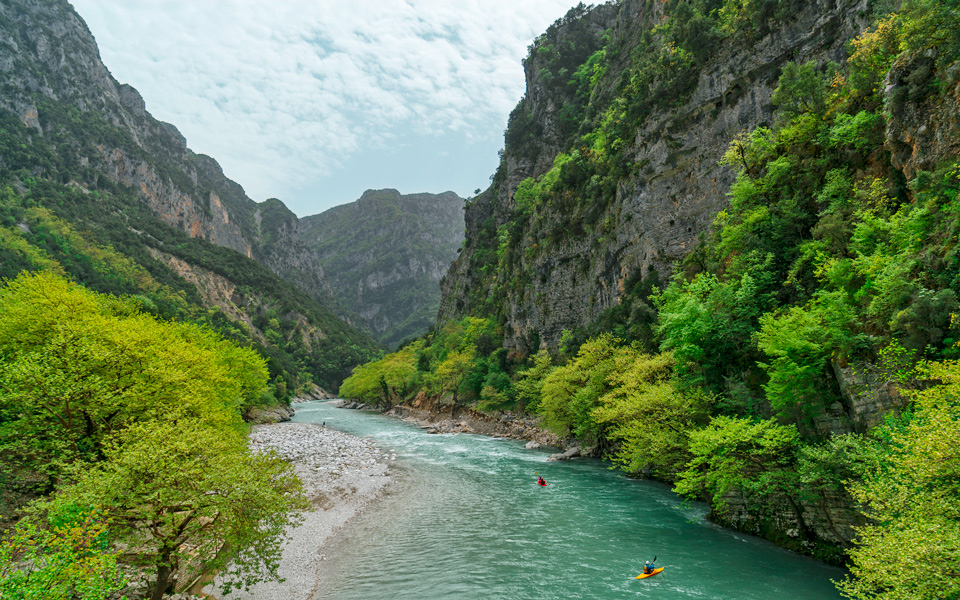
© Perikles Merakos
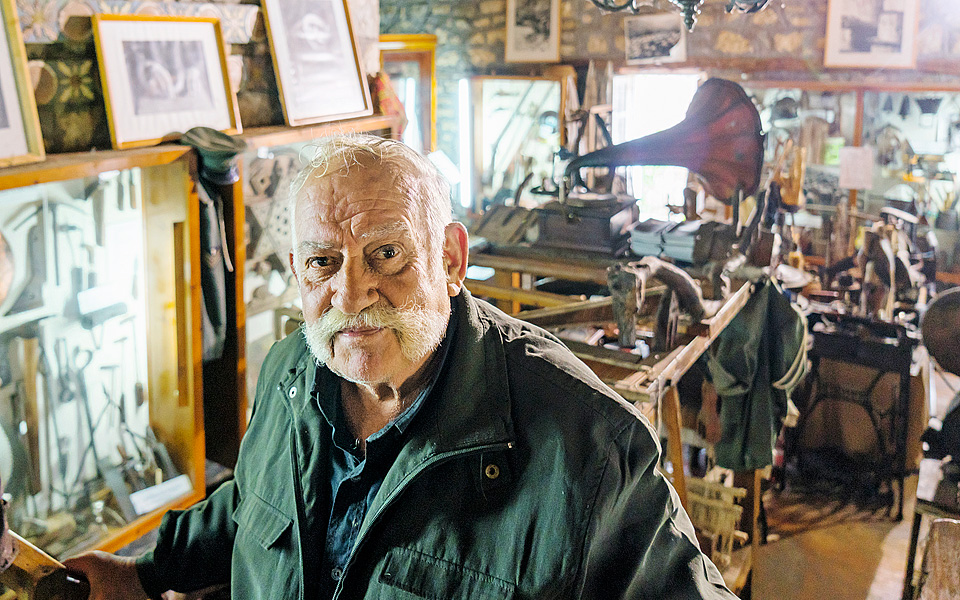
© Perikles Merakos
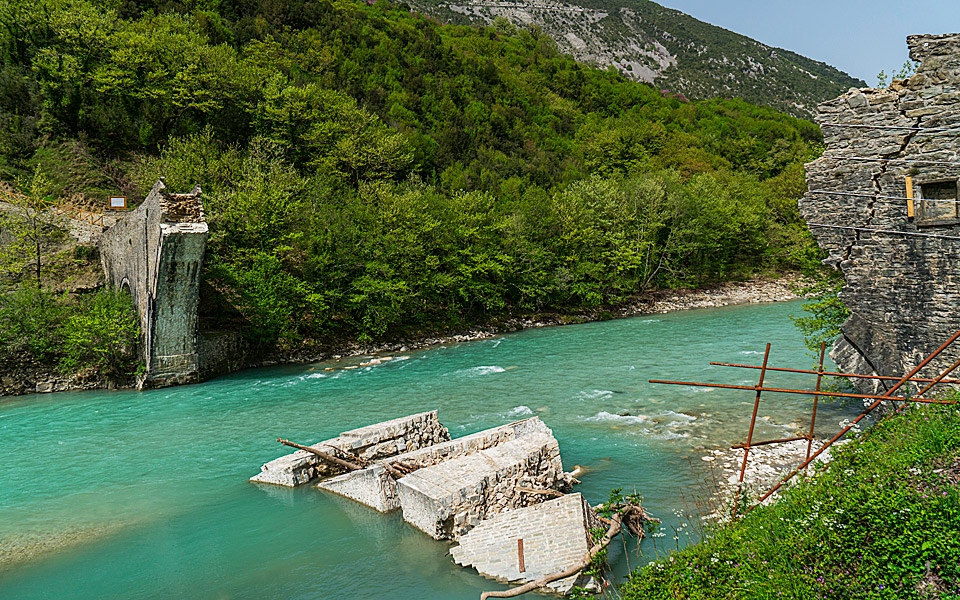
© Perikles Merakos
“Some larger, some smaller, the Tzoumerkohoria are mostly quiet – indeed almost silent in several cases where there are few permanent residents.”
Some larger, some smaller, the Tzoumerkohoria are mostly quiet – indeed almost silent in several cases where there are few permanent residents. For tourists, the most famous of the bunch are probably Kalarrites and Syrrako, two beautiful stone-built villages whose distinct character is protected by law. While the two are relatively close to one another as the crow flies, on the ground it is a different story, with one needing to travel 24 kilometers by road and spend a little short of an hour to get from one to the other (alternatively there is a footpath that connects the two). We often run into such ‘setbacks’ and delays on our trip, making our theoretically simple itinerary more difficult to realize in practice. But it makes sense in this mountainous terrain where the roads are all bends, punctuated every now and then by small boulders dislodged during recent rockfalls. Elsewhere large cracks have appeared in the asphalt so driving requires a degree of caution.
As would be expected given its location in the heart of Epirus, the region of Tzoumerka has many stone bridges. These range in size from the tiny Neraidogefyro (literally ‘fairy-bridge’) to the bridges of Gogou and Politsas, reaching the enormous Plaka bridge, a huge single-arched bridge that once spanned the Aracthos, the river that once formed the natural border between the nascent Greek state and the Ottoman Empire. The Plaka Bridge collapsed during the winter of 2015 in the wake of major storms. Today, and until its pledged restoration, all that is left is a gaping hole and a few large pieces partially submerged in the river. Despite this, the location where the historic bridge once stood remains attractive, with the customs office on the Greek side of the old border now a cafe.
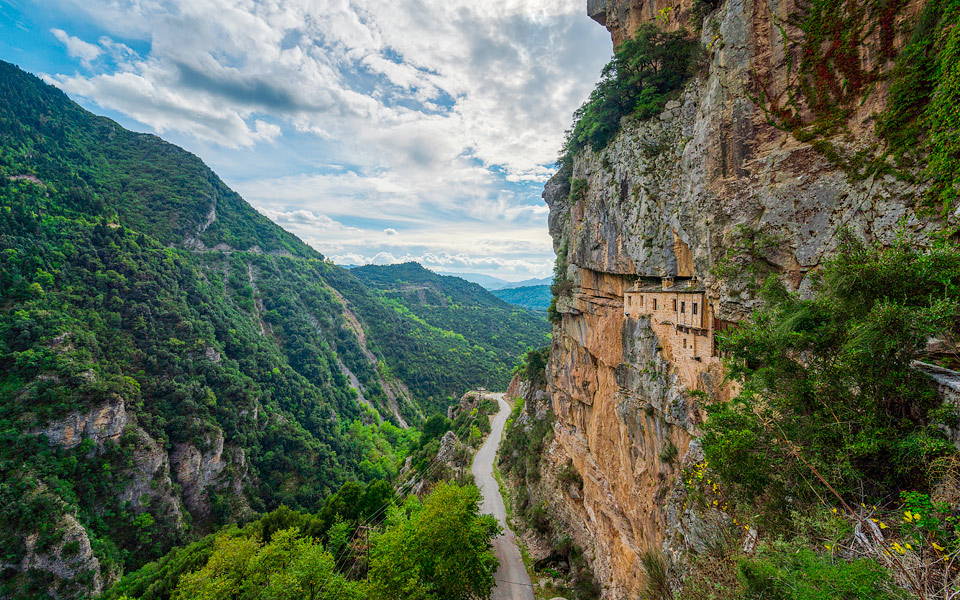
© Perikles Merakos
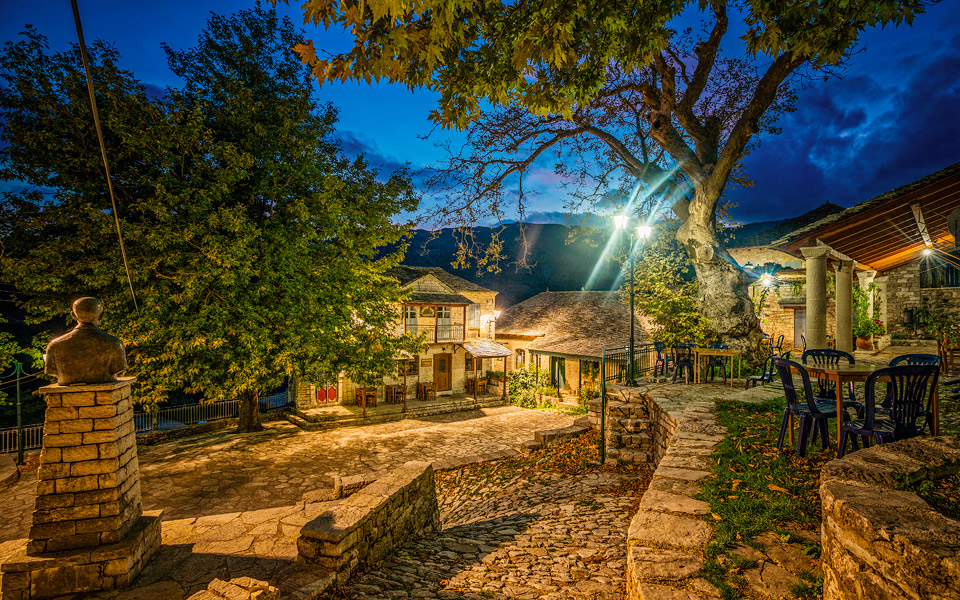
© Perikles Merakos
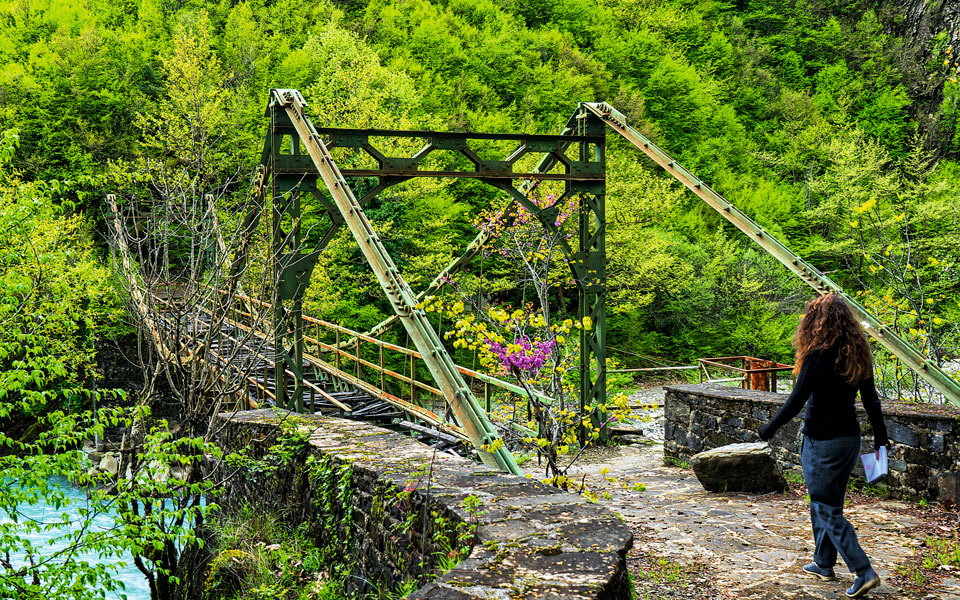
© Perikles Merakos
Tzoumerka is more than bridges
Aside from its villages and stone bridges, what sets the region of Tzoumerka apart is its natural beauty, with its razor-sharp mountain peaks, freezing waterfalls, rivers tumbling through gorges, lush green hiking trails, Judas trees blossoming with their rose-colored flowers (which a local – and now friend – gives to me to try as a morning snack) and its thousand-and-one religious monuments (such as the Red Church, Vyliza Monastery, or the incredible Kypina Monastery which may be a rock or a building, I can’t decide). One may not expect it, but Tzoumerka also has an industrial element; in the village of Theodoriana at an altitude of 1,000m a mineral water bottling plant operates, drawing water from the Springs of Kostilata which it ships around Greece and abroad. During our brief tour we watch the automated bottling process repeated over and over again, reminiscent of a silent Charlie Chaplin film.
But what makes the greatest impression on me are the people who we meet during our journey. The sample may be small, but I get the impression that Tzoumerka tends to breed and attract a certain kind of person: nature lovers who work largely with their hands, people who see the mountain as their backyard, who dive into the rivers and forests, gather wood and rocks and build their homes with their bare hands, who see wild herbs and start thinking about the tinctures they can make and who, when a tree trunk falls into their hands, turn it into a robust stool. Day by day the more people I meet, the more certain I become. One man has built his home stone by stone, learning the art alongside a mason. Another has carved intricate patterns into the wood lining the interior of his cafe. And a third has built a house for less money than most cars, thanks to the fact that he did everything himself.
“With the term ‘Hellenikans’ he meant the people who, particularly with creative things, have their minds focused outwards and not inwards.”
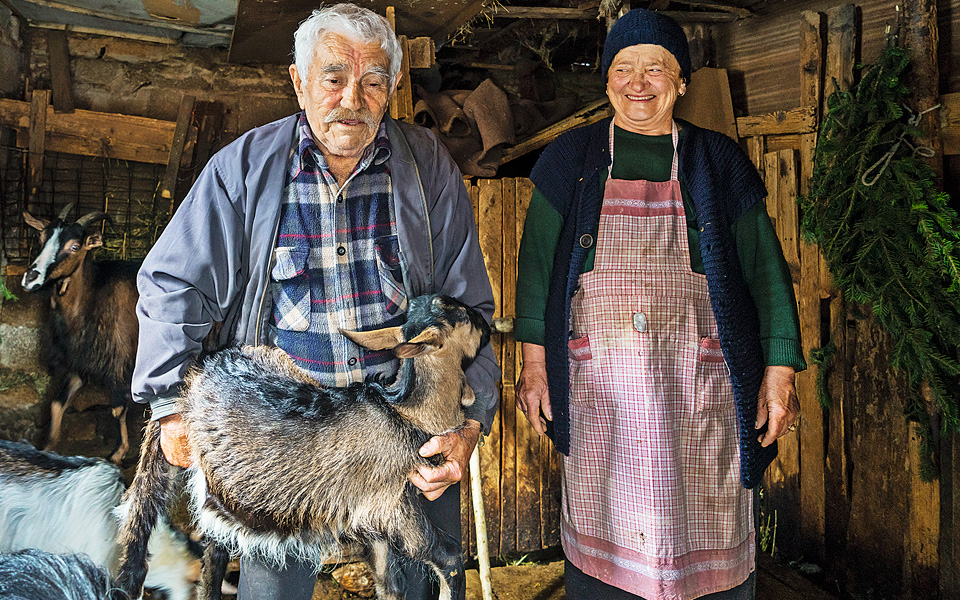
© Perikles Merakos
“Tzoumerka tends to breed and attract a certain kind of person: nature lovers who work largely with their hands, people who see the mountain as their backyard, who dive into the rivers and forests, gather wood and rocks and build their homes with their bare hands.”
These people form my memories of Tzoumerka. They, together with a few things more: the silver wreaths that were once common and which are found in the small ecclesiastical museum in Kalarites, the interwar fountains of Krystallos and Arhontos in Vourgareli, the little house Trifonas built for a young beekeeper in the village of Kypseli, the group of Swiss, German and Greek tourists who were floating one morning on the Aracthos river in a rubber raft waving colorful oars, the capes of Syrrako which made famous the local tailors, and the 5th generation cafe of the sweet-spoken Napoleon which has ceaselessly kept Kalarrites alive from the mid 19th century until today.
Three generations, three stories
Fotis Delimitros, 29 and his friend Apostolis Tsibanakos came to Tzoumerka in October 2013. Both hail from Volos and are very well-traveled. When they first arrived the idyllic mountain refuge they now operate was little more than an abandoned building in crumbling disrepair. But with a little help and a lot of elbow-grease they managed to change that. “We began with nothing. We came in a small truck with some basic equipment, that is some things for the kitchen, a few blankets and some hand-tools which we would use to build whatever we could…” With the help of friends the make-over began. “We scraped, painted, spackled, cleaned, fixed. Chaos! It took quite a while to renovate it because the building had lots of problems.”
Today despite the fact that some things still remain to be fixed, the situation is much better. The interior of the Mountain Refuge of Melissourgoi is incredibly warm and welcoming – a rustic lounge imbued with the youthful exuberance of its owners. The activities available vary with the seasons: fall is “a mushroom-gatherer’s delight” while spring is great for hiking, visiting waterfalls “which fall from a height of 300, 400 meters,” foraging for wild herbs, trekking down gorges, mountain running or just sitting back and enjoying a glass of tsipouro (a locally brewed grape-based spirit) with good company.
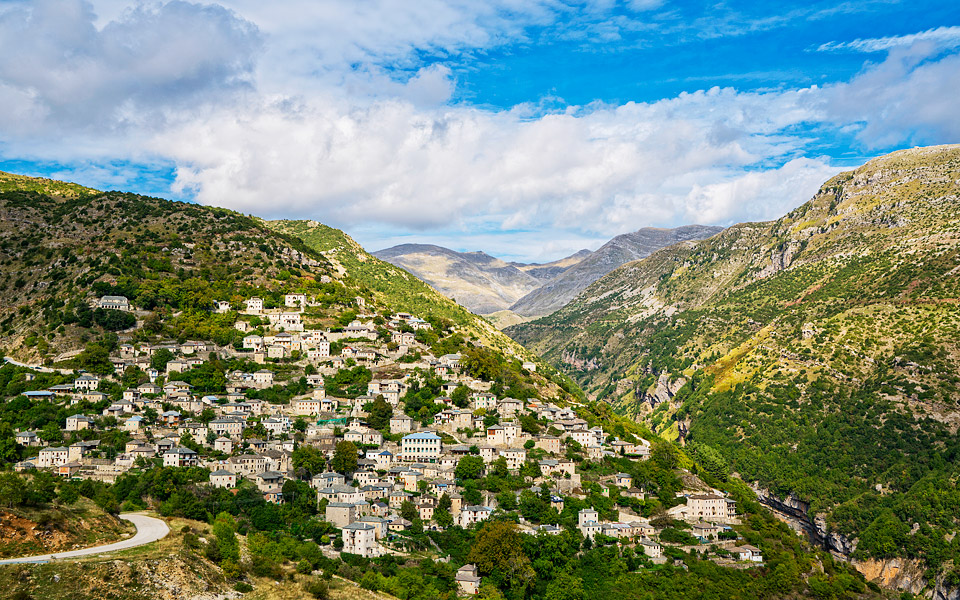
© Perikles Merakos
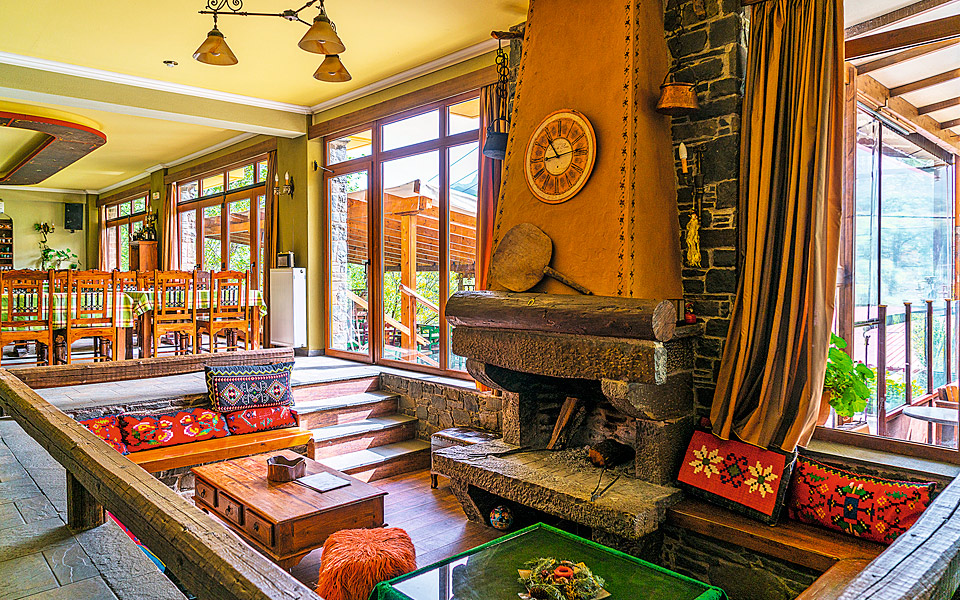
© Perikles Merakos
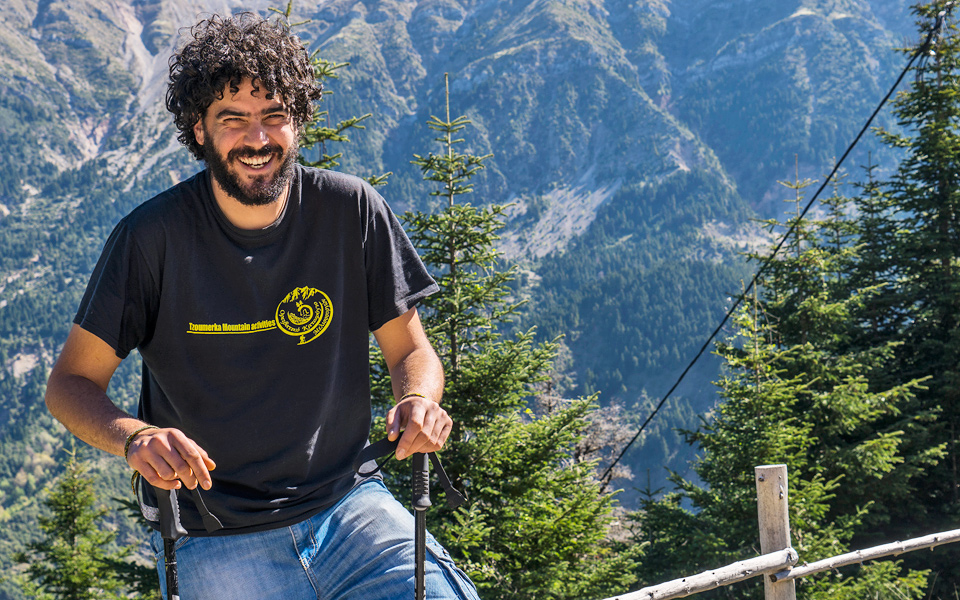
© Perikles Merakos
Less than 18 months ago Athenian Yiannis Theoharopoulos and his wife Marina Anastasiou (who comes from the area) established the Tzoumerka Activites Center, a center for sports and recreation in Agnanta. “In Tzoumerka our life is on the mountain. In Athens we lived in Thrakomakedones on Mt. Parnitha – even there the city’s breath still got to you. We always wanted to leave.” So they came to Tzoumerka, found an old gymnasium, rented it on a 20 year lease and… rolled up their sleeves. Today the place resembles a giant playground for kids and adults alike where one can do, “gymnastics, climbing, ping pong, biking, beach volleyball, rope games, traditional dancing, zumba, TRX and archery.” Whoever wants can also take a guided hike on the mountain or practice boxing with the punching bag.
Beyond the Tzoumerka Activites Center, the two have also organized the ‘Athlos Tzoumerkon’ an ‘adventure race’ which in its current form features mountain running (which took place in April) and mountain biking (which will take place on May 22nd). For the mountain running race, Yiannis has created a 52km route by linking old trails and dirt roads. The trail passes through three refuges: in Pramanta, Melissourgoi and Katarraktis. The Athlos Tzoumerka also includes two smaller routes (one 34km route and a fun race). And that is basically how he spends his time: sports, sports and more sports. And if there is a bit of downtime, he says, “I like to cut wood or prepare my field to plant potatoes.”
“For the mountain running race, Yiannis has created a 52km route by linking old trails and dirt roads. The trail passes through three refuges: in Pramanta, Melissourgoi and Katarraktis.”
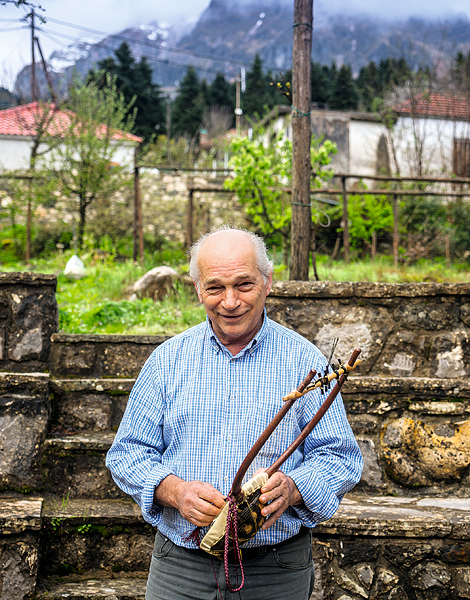
© Perikles Merakos
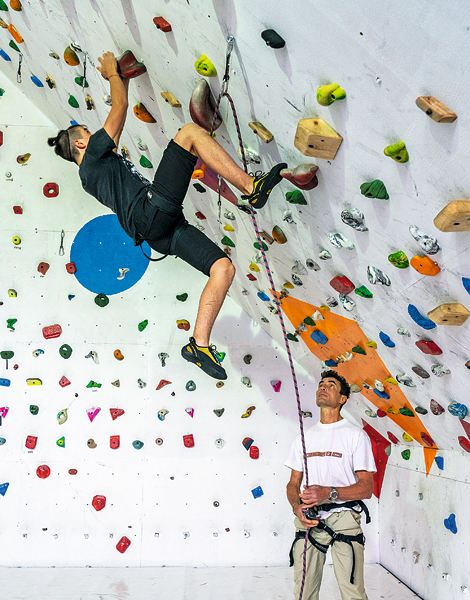
© Perikles Merakos
We become friends with Yiorgos Polyzos, our neighbor in Tsopela, after only a few days after our first meeting. In his spare time he makes ancient Greek musical instruments. He got into the hobby (which goes together with his main profession which is jewelry making) after visiting an exhibition about musical instruments, as well as thanks to the influence of his friend, the writer and poet Yiannis Maniatis. “In 1984 I read a piece of his titled, ‘Out with the Hellenikans‘. With the term ‘Hellenikans’ he meant the people who, particularly with creative things, have their minds focused outwards and not inwards. I felt the obligation to repay him with something.” And so he gave him a lyre as a gift. That is how he began this curious hobby which he continued thanks to the students of the University Club (where Maniatis taught) who gave life to Polyzos’s instruments by playing them.
To date Yiorgos Polyzos has made 17 different types of musical instruments, (string, wind and percussion instruments like those played between the 8th and 3rd centuries BCE) including a triangular harp, pandourida, flute and horn. He speaks about them at length, but chiefly about his favored lyre. “Everything starts from there. When one knows how to play the lyre one can play the kithara, phorminx, the varvitos – all of these instruments.” Many of them hang on the wall of his home, forcing the visitor to look again at what had at first seemed to be a simple goat’s horn or a common turtle shell.
GETTING THERE
From Athens you can drive to Pramanta (418kms) which is the central village of Tzoumerka in 6-7 hours via the Athens – Patras road and the Rio bridge (for a small car petrol and tolls will cost about 65 euros).
Alternatively, you can take a one-hour flight from Athens to Ioannina (when we checked for one-way ticket in mid-May the price was about 100 euros). From Ioannina Pramanta it is about a 1.5 hour drive (62 kilometers).

